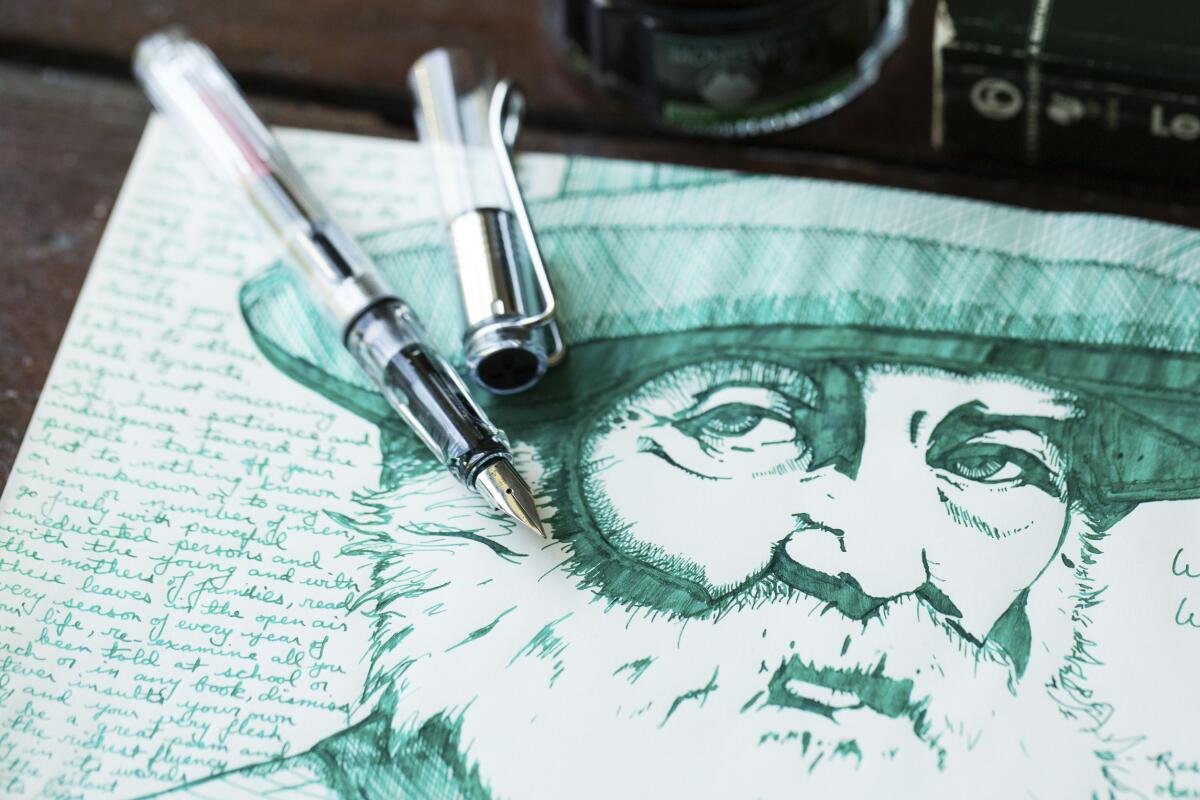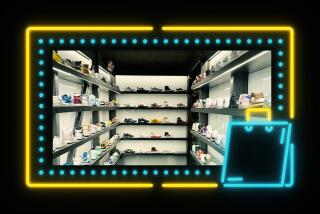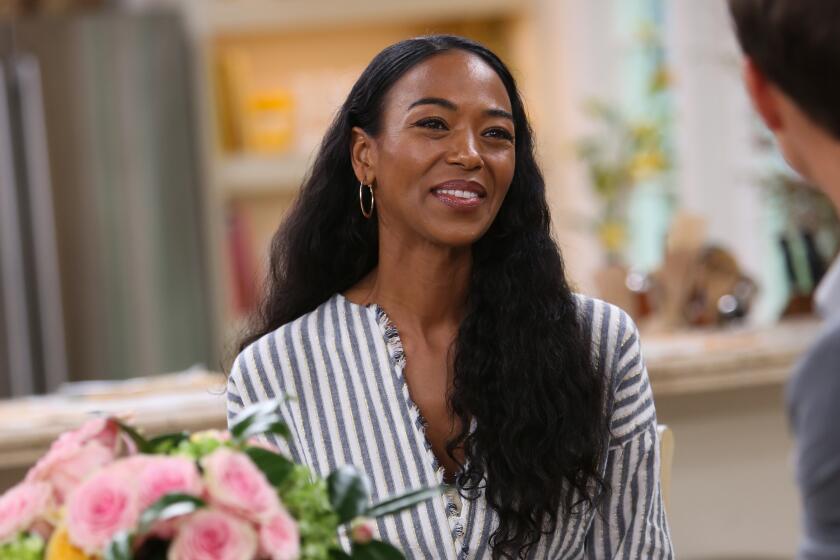Fred Krinke, L.A.’s king of the fountain pen, dies at 91

- Share via
It was a time of gas lamps and street cars when Fred Krinke’s grandfather flung open the doors to the Fountain Pen Shop, supplying the writing instruments and bottles of midnight-black ink that the lawyers, judges, note takers, letter writers and shopkeepers required in bustling downtown Los Angeles.
By the time Krinke took over the shop, the ballpoint pen was bearing down on its more elegant sibling, and eventually the keyboard and touch screen threatened to do in the fountain pen altogether.
But Krinke weathered the cultural storms and became the go-to source in Los Angeles when someone needed a fresh nib, an ink cartridge or a pricey made-to-order Montblanc.
Hard at work until the end, Krinke died Sunday at 91. The fate of his store, said to be the oldest pen shop in the U.S. operated continuously by the same family, is uncertain.
The Fountain Pen Shop was a museum, repair shop and retail outlet squeezed into one room, its glass cases filled with curiosities that attracted collectors, investors and those who preferred the free flow of ink. With a ballpoint pen, a user could say something. With a fountain pen, they could sing it. Stylophiles seem to agree on that.
“The fountain pen slows you down, and makes you think,” said John C. Maloney, a frequent customer at the Fountain Pen Shop.
Born Jan. 30, 1928, Krinke was raised in Pasadena and dreamed of becoming a musician until it became clear he would be unable to escape the long shadow of the fountain pen. His grandfather sold them, his father sold them, and he would too.
Krinke was a student at what then was Pasadena Junior College when World War II broke out, stripping the pen shop of most of its hired help. So Krinke squeezed his classes into the morning hours and then hopped aboard a Pacific Electric Red Car and headed downtown to repair broken fountain pens. After he served in the Army Air Forces, his father offered him a choice — education or pens.
“I said, ‘Well, I’m having a good time repairing pens,’” he told the Monrovia Weekly in 2016. His future was set.
The little shop was initially located at 6th and Spring streets and later moved near Pershing Square before the 1994 Northridge earthquake devastated the building where it was housed. So it moved again before Krinke finally grew weary of the commute and opened shop in an industrial park in Monrovia. But wherever he went, his customers followed.
Adam Gilbert, a professor at USC’s Thornton School of Music, discovered the shop in 2006 when he was looking for a pen that might help him improve his drawing. He settled on a 1920s fountain pen that Krinke told him would probably hold up for the rest of his life.
“When I stepped into the shop, it was like a refuge,” Gilbert said.
By the 1950s it appeared fountain pens would go the way of sealing wax and vinyl records. The ballpoint pens were cheap, efficient, disposable and unlikely to leave a stain on a shirt pocket or a puddle in the bottom of a purse.
Still, for some, the fountain pen was a more elegant tool, something with character and often a long history. Krinke and his forebears made a point of never throwing away any parts, be it a screw, a nib (the tip of the pen) or one of the bladders that held the ink in older pens.
“We have parts for and can repair fountain pens made before World War I,” he told The Times in 1986. “We are frequently called upon to do so.”
Those who walked into Krinke’s shop said they felt as if they were stepping into a different time. There were breather tubes, plungers, ink bladders, filler units, nibs and pens in every possible color — orange, turquoise and blue with delicate laces of silver. There was a pen built in 1851 that came with an eyedropper for dripping ink into a central tube, and even a homemade brew for cleaning up ink stains called Fred’s Secret Sauce.
“People would go into the shop with a question and he’d give them an hourlong history lesson,” said Maloney, whose 24-year “addiction” to fountain pens began when he and his wife wandered into the Fountain Pen Shop while visiting antique stores downtown. “He was like the cool dad who could fix anything.”
Though Krinke was fond of the bright, dazzling pens that were in vogue during the Roaring ‘20s, his weapon of choice was a more sturdy pen made decades later.
“I wouldn’t trade this pen for love or money,” he told The Times in 1998, grinning as he held the 1950 Esterbrook skyward. “It’s not for sale.”
Krinke is survived by his wife Margaret and five daughters.
More to Read
Start your day right
Sign up for Essential California for the L.A. Times biggest news, features and recommendations in your inbox six days a week.
You may occasionally receive promotional content from the Los Angeles Times.








